Disclosure: This article contains affiliate links. We may earn a commission from purchases at no extra cost to you, which helps our travel content.
When I first arrived in Graz last spring, I expected the UNESCO World Heritage old town and the futuristic Kunsthaus to dominate my experience. Mais non, this Austrian city had other plans for me. As someone who appreciates craftsmanship in all its forms—from the engines I rebuild to the architectural marvels I photograph—Graz revealed itself as a masterclass in design evolution. The city seamlessly blends Renaissance courtyards with avant-garde installations, all while maintaining an authenticity that's increasingly rare in Europe's tourist destinations. After three visits exploring every nook and cranny, I've compiled these ten hidden gems that most visitors miss. Perfect for couples seeking intimate experiences away from the crowds, these secret spots showcase why Graz earned its UNESCO Creative City of Design designation without the fanfare of Vienna or Salzburg.
The Forgotten Courtyards of Herrengasse
Herrengasse may be Graz's main shopping street, but few visitors realize that behind the polished storefronts lie hidden Renaissance courtyards that tell stories centuries old. My fascination with these spaces began when I noticed a small, unmarked passage between two boutiques at Herrengasse 16. Following my curiosity—something I've done since childhood explorations in Parisian alleyways—I discovered a tranquil courtyard with arcaded galleries and a central fountain that seemed frozen in time.
What makes these courtyards special isn't just their architectural beauty but how they reveal Graz's historical layers. The Palais Herberstein courtyard particularly captivated me with its wrought ironwork balustrades—craftsmanship that reminds me of the meticulous handiwork my father taught me in his auto shop. Each curve and joint shows the blacksmith's understanding of both function and form.
Most tourists walk past these entrances without a second glance, but ducking through these passages feels like stepping through time portals. The transition from bustling commercial street to peaceful 16th-century enclave happens in just a few steps. For couples, these courtyards offer perfect moments of quiet connection away from the tourist crowds.
I recommend visiting early morning when the light creates dramatic shadows across the stone walls, or late afternoon when locals return home, briefly animating these spaces with glimpses of contemporary Graz life behind centuries-old facades.
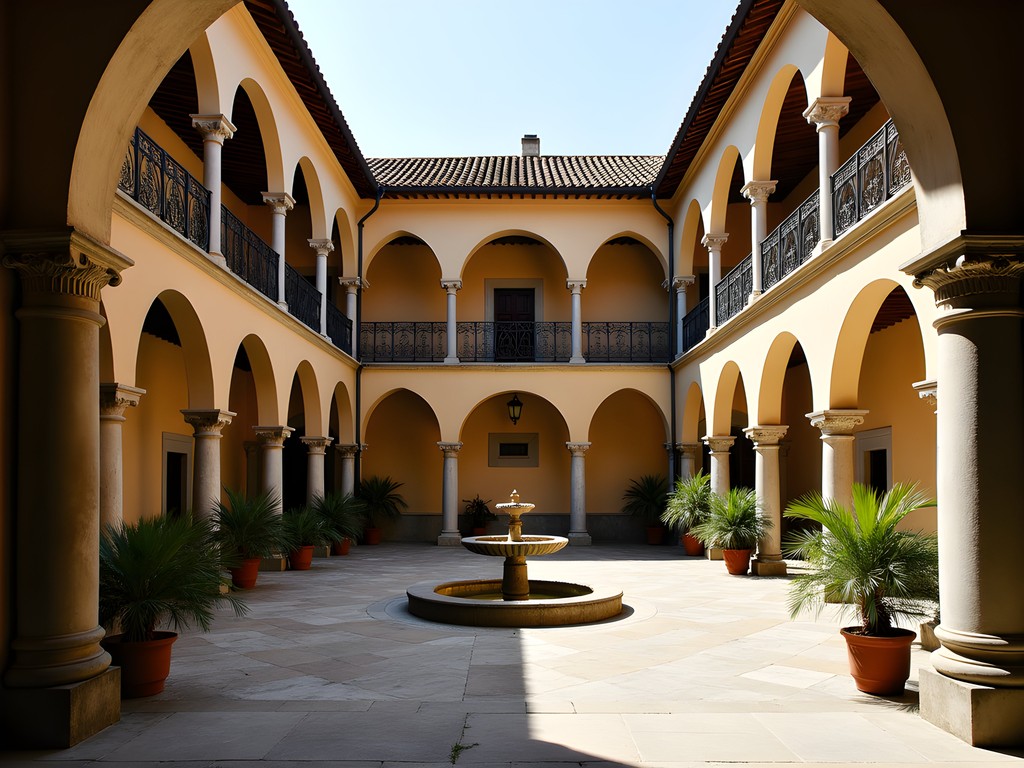
💡 Pro Tips
- Look for small passages between buildings on Herrengasse, particularly numbers 16, 21, and 26
- Visit between 8-10am for the best lighting and fewest people
- Some courtyards connect to others, creating a hidden network you can explore
Schlossbergstollen: The Mountain's Secret Tunnels
Most visitors to Graz make the obligatory trip to Schlossberg for the clock tower views, taking either the funicular or the zigzagging stairs. But there's a third route that reveals the mountain's hidden history—one that speaks to me as someone who's spent a lifetime working with my hands and understanding how things are built.
The Schlossbergstollen is a tunnel system carved through the mountain during World War II as air raid shelters. Today, only a small section remains open to the public, with an entrance tucked away near Schlossbergplatz. When I first discovered it, I was immediately struck by the engineering precision—how workers had carved through solid rock with rudimentary tools, creating passages that have stood the test of time.
The main tunnel stretches about 200 meters, illuminated by soft lighting that highlights the rough-hewn rock surfaces. The cool air inside (about 12°C year-round) provides welcome relief during spring afternoons when Graz's temperatures start climbing. What fascinated me most was the side chamber converted into a small exhibition space, documenting how thousands of citizens sought shelter here during Allied bombing raids.
For photography enthusiasts, I recommend bringing a portable tripod for the challenging low-light conditions. The juxtaposition of natural rock and human intervention creates compelling images, especially where water has left mineral deposits on the walls.
The tunnel system emerges at an elevator that takes you to the top of Schlossberg—a surprise ending that deposits you directly beside the clock tower, but with a completely different perspective than those who arrived by conventional routes.
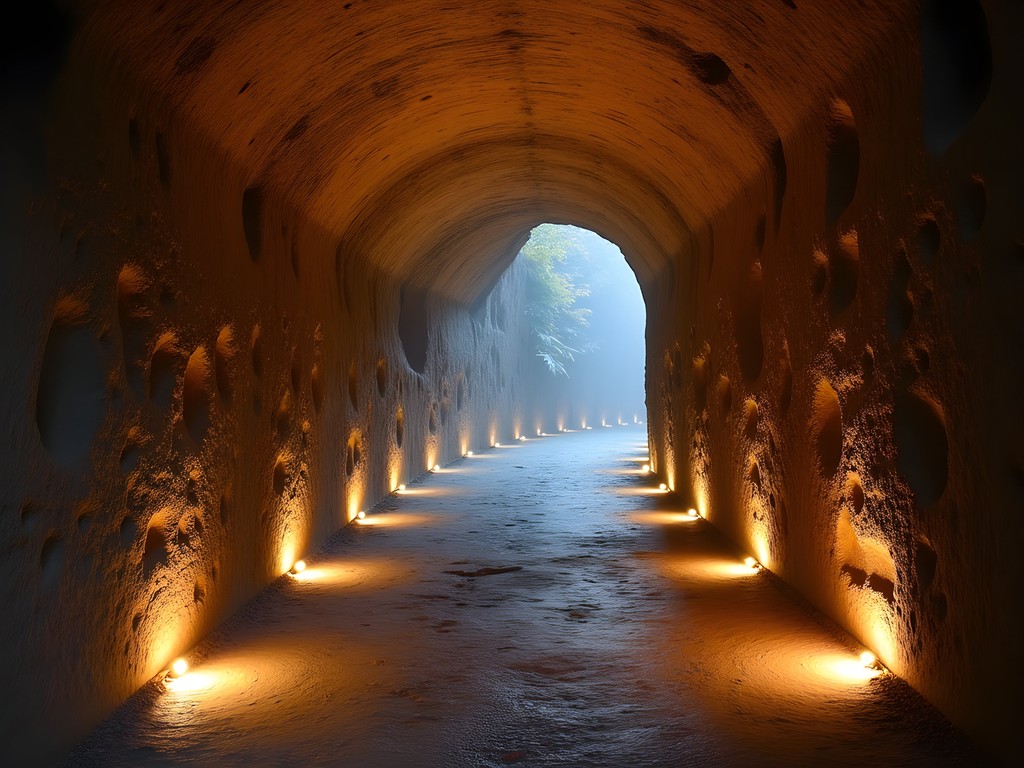
💡 Pro Tips
- Enter from the less obvious northern entrance near Schlossbergplatz for a more atmospheric experience
- Bring a light jacket even in spring—the temperature difference between outside and inside can be significant
- Visit late afternoon when the tunnels are least crowded
Atelier Jungwirth: Photography in a Medieval Vault
My appreciation for spaces that honor both history and innovation led me to one of Graz's most unusual art venues. Hidden beneath a residential building in the old town, Atelier Jungwirth occupies a 14th-century vault that once stored goods for medieval merchants. Today, it houses rotating photography exhibitions in a setting that could not be more perfect for contemplative viewing.
The entrance is easy to miss—just a simple door on Opernring with a small plaque. Descending the stairs feels like entering another world, where contemporary photographs hang against ancient stone walls. The juxtaposition is striking: cutting-edge visual art displayed within a space that has witnessed centuries of history.
What makes this gallery special is how the architecture becomes part of the viewing experience. The thick stone walls and arched ceiling create natural viewing chambers, while thoughtful lighting highlights both the photographs and the historical elements. During my visit, an exhibition of black and white portraits seemed to dialogue with the textured stone surroundings, each enhancing the other's impact.
The gallery is open only during exhibitions (usually Thursday through Saturday), so timing your visit requires planning. Check their website before your trip, as their schedule can be irregular. When I visited with a friend last spring, we had the entire space to ourselves for nearly an hour—a luxury in today's often crowded cultural venues.
Afterward, I recommend processing the experience at the nearby Café Mitte, where I spent an hour sketching the architectural details I'd observed while enjoying their excellent café au lait. For photography enthusiasts, this gallery offers inspiration not just through the exhibited works but through its masterful demonstration of how space shapes our perception of images.
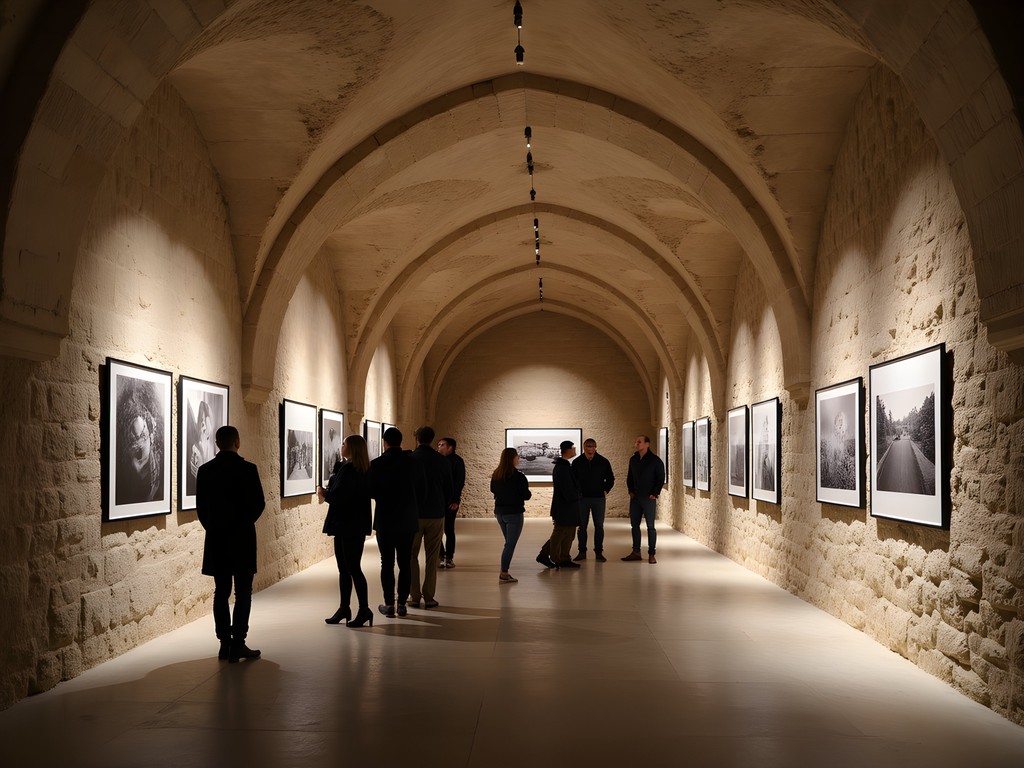
💡 Pro Tips
- Check opening hours in advance as they're limited and irregular
- Take time to appreciate how the medieval architecture frames each photograph
- Ask the gallery attendant about the building's history—they often share fascinating details not found in guidebooks
Puchstraße Flea Market: A Mechanic's Paradise
As someone who has spent a lifetime working with tools and appreciating the stories behind well-crafted objects, I was delighted to discover the Puchstraße flea market on Graz's eastern outskirts. Unlike the tourist-oriented markets in the city center, this sprawling Saturday affair attracts locals searching for everything from antique furniture to vintage auto parts.
Named after the famous Puch motorcycle factory that once operated nearby, this market holds special significance for someone with my background. During my second visit to Graz, I spent an entire morning here, running my fingers over vintage Puch motorcycle components that reminded me of restoration projects in my father's Paris workshop. The vendors—many former factory workers or their descendants—share fascinating stories about Graz's industrial heritage if you express genuine interest.
For couples who enjoy hunting for unique souvenirs, this market offers authentic Austrian finds without tourist markup. I've discovered everything from hand-carved wooden kitchen tools to mid-century Viennese ceramics at prices that would be unthinkable in the old town shops. My most treasured find was a set of precision calipers from the 1950s, still in perfect working condition—a testament to Austrian craftsmanship that now occupies a special place in my workshop back home.
Navigating the market requires patience and a keen eye. I recommend bringing a compact daypack for your discoveries, as plastic bags are rarely provided. Early arrival (before 9am) rewards you with the best selection, though bargains appear later as vendors prepare to pack up.
Afterward, follow the locals to one of the simple food stalls for Bauernkrapfen—fried dough pockets filled with sauerkraut or jam—a regional specialty that perfectly caps the authentic experience.

💡 Pro Tips
- Arrive before 9am for the best selection, or after 12pm for better bargaining opportunities
- Bring cash in small denominations—very few vendors accept cards
- Learn a few basic German phrases for negotiating; even minimal effort is appreciated by vendors
Leechwald: The Urban Forest Laboratory
Just beyond the technical university campus lies a hidden natural treasure that most tourists—and even many locals—overlook. Leechwald is not just any urban forest but a living botanical laboratory with over 500 tree species from across the globe. For couples seeking respite from urban exploration, this forest offers tranquility with an educational twist.
What drew me to Leechwald was learning about its unique status as both recreational space and scientific resource. The university's forestry department has been cultivating this arboretum for over a century, creating microhabitats that showcase everything from Japanese maples to North American sequoias, all labeled with their scientific names and origins.
During my spring visit, the forest floor was carpeted with wildflowers—brilliant blue scilla and delicate white anemones creating a natural tapestry beneath the trees. The contrast between this wild beauty and the scientific precision of the collection perfectly embodies what I love about Graz: the harmonious balance between nature and human ingenuity.
The forest contains several themed paths, but my favorite is the climate change trail, which illustrates through carefully selected plantings how forests might adapt to warming temperatures. As someone who has witnessed environmental changes across continents during my travels, this forward-thinking approach resonated deeply.
For the best experience, I recommend following the outer loop trail (about 3.5km) counterclockwise from the university entrance. This route takes you through the most diverse sections while avoiding the more populated central areas. Along the way, several wooden platforms offer perfect spots for a picnic lunch—I spent a memorable afternoon here with my compact binoculars observing the surprising variety of woodpeckers that inhabit these woods.
The forest is particularly magical in late afternoon when sunlight filters through the canopy, creating what photographers call 'the golden hour'—perfect for couples seeking memorable images of their Graz adventure.
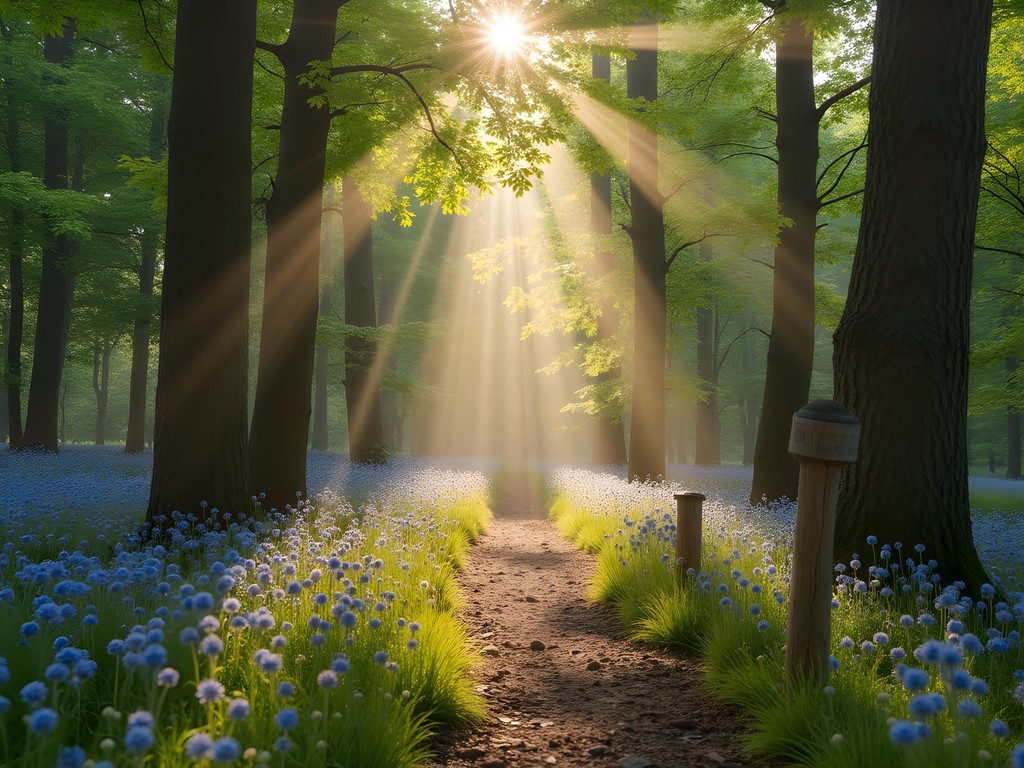
💡 Pro Tips
- Visit on weekday mornings to have the forest almost entirely to yourself
- Download the free Leechwald botanical guide app for interactive tree identification
- Look for the hidden meditation circle near the eastern boundary—a perfect spot for quiet reflection
Lendhafen: Industrial Heritage Reimagined
The Lend district has transformed from Graz's industrial workhorse to its creative heart, but few visitors venture to the forgotten riverbank area called Lendhafen. This former harbor where barges once unloaded goods for the city has been reclaimed as a linear park that beautifully honors its working-class roots.
As someone who appreciates the beauty in utilitarian design, I was immediately drawn to the preserved industrial elements—massive iron mooring rings, sections of original rail tracks, and repurposed loading cranes now serving as public art. The city could have erased this industrial heritage, but instead chose to celebrate it—a decision that resonates with my belief that history lives in the things we build with our hands.
What makes Lendhafen special is how it balances preservation with reinvention. The concrete loading platforms now serve as seating areas where students sketch, couples share wine at sunset, and children play along the water's edge. When I visited last spring, I watched a local artist using the massive rust patterns on an old mooring post as inspiration for abstract paintings—finding beauty in what others might consider decay.
The area comes alive on summer evenings when locals gather for impromptu picnics and music sessions, but spring offers a quieter charm with wildflowers pushing through cracks in the industrial concrete—nature's gentle reclamation of human infrastructure.
For photography enthusiasts, I recommend bringing a wide-angle lens to capture the juxtaposition of industrial elements against the river and city skyline. The late afternoon light creates particularly striking contrasts between the weathered metal structures and the water.
After exploring Lendhafen, follow the river path north to discover one of Graz's best-kept culinary secrets: Café Mur, a floating platform café where local chefs experiment with seasonal menus. Their elderflower spritz—made with flowers foraged from along the riverbanks—perfectly captures the spirit of this neighborhood where old and new coexist in harmonious balance.

💡 Pro Tips
- Visit at sunset when the industrial structures create dramatic silhouettes against the sky
- Look for the QR codes on historical elements that reveal photographs of the harbor in its working days
- Bring a picnic blanket and join locals on the concrete platforms for an authentic riverside experience
Kaiser-Josef-Markt: The Chef's Secret Basement
The Kaiser-Josef-Markt is hardly a secret—this farmers' market appears in every guidebook. But what most visitors don't discover is the network of underground storage cellars beneath the market square, where local restaurant chefs meet to select the finest produce before dawn.
I discovered this hidden world through a chance conversation with a chef at my hotel. When I mentioned my interest in food markets, he smiled and said, "Le vrai marché commence sous terre"—the real market begins underground. Through his connection, I arranged to join the early morning ritual that unfolds beneath the market square.
Descending the unmarked stairs at 5:30am, I entered a series of interconnected cellars where farmers store their premium produce. The temperature drops noticeably, and the air fills with the earthy scent of fresh vegetables and mushrooms. Here, away from tourist eyes, chefs from Graz's finest restaurants carefully inspect crates of specialties—white asparagus in spring, pumpkins in fall—negotiating prices and building relationships with producers.
What struck me most was the sense of community in these cellars. Competitors in the restaurant world became colleagues underground, sharing tips about exceptional harvests or introducing each other to farmers with particularly fine produce. The transactions happen in a mixture of Austrian German and hand gestures, with quality always trumping price.
Gaining access to this underground world requires connections, but visitors can glimpse this hidden dimension by arriving at the market above ground around 6:30am when chefs emerge with their treasures. Look for the small doors at the northeastern corner of the square, where you might catch sight of white-coated figures carrying wooden crates toward restaurant vans.
For couples interested in culinary experiences, I recommend building your own market breakfast after this early start. Purchase fresh bread from the Kornhäusel bakery stall, artisanal cheese from the mountain dairy vendors, and whatever fruits are in season. The market's northwestern corner has bench seating where you can enjoy your assembled feast while watching the market come to life around you.
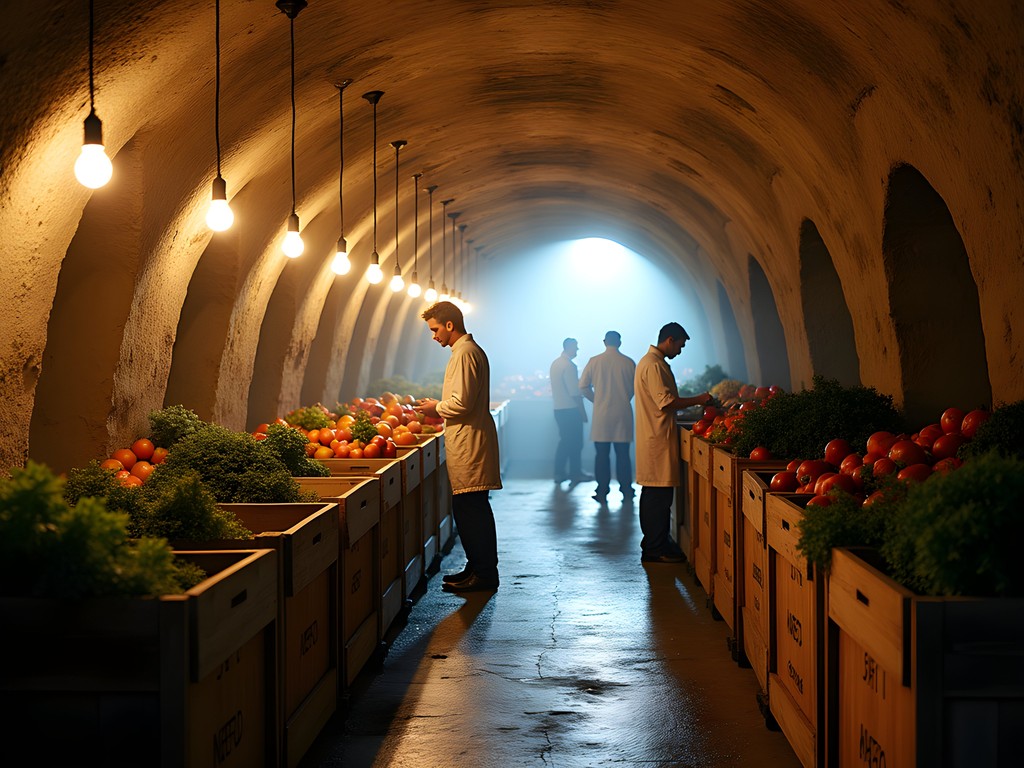
💡 Pro Tips
- Arrive by 6:30am to observe chefs emerging from the underground cellars
- Look for producers with soil-stained hands—they're the genuine farmers rather than resellers
- Ask vendors for 'Kostprobe' (taste sample) when selecting cheeses or fruits—most are happy to oblige
Murinsel After Dark: The Island's Secret Light Show
The Murinsel—Graz's artificial island in the Mur River—appears in every guidebook as a daytime attraction. This floating steel platform, designed by American artist Vito Acconci, connects the river's banks with a twisted shell-like structure housing a café and amphitheater. But what most visitors miss is the island's transformation after the café closes at 11pm.
During my second visit to Graz, I happened to be crossing the nearby Erzherzog-Johann-Brücke around midnight when I noticed something extraordinary: the Murinsel was performing a silent light symphony. The structure's integrated LED system—typically used for simple blue illumination during regular hours—switches to an artistic program of slowly morphing colors and patterns after closing time.
This nocturnal light show is no accident. I later learned it was designed by local light artist Kerstin Pfleger as a gift to insomniacs and night owls—those who experience the city when most tourists are asleep. The program runs from 11:30pm until 2am, with each evening featuring slightly different sequences.
What makes this experience special is how the changing lights interact with the river below, creating rippling reflections that double the visual impact. On clear nights, these reflections transform the entire river section into a canvas of moving color. During spring, when the river runs high with mountain snowmelt, the effect is particularly dramatic as the faster current fragments the reflections into impressionistic patterns.
For couples seeking a romantic moment away from crowds, the western riverbank opposite the island offers perfect viewing spots. I recommend bringing a lightweight travel blanket to sit comfortably on the stone embankment. The area is perfectly safe at night, with enough passing pedestrians to feel secure but not so many as to disturb the tranquility.
The best viewing experience combines this light show with Graz's remarkable silence after midnight. In this moment of urban calm, with the colored lights dancing on water and the occasional sound of the river, you'll discover a side of Graz that most travelers never experience—the city's contemplative night face.

💡 Pro Tips
- Arrive around 11:45pm when the full program begins after the café staff have departed
- The western bank opposite the island offers better viewing angles than standing on the island itself
- Bring a camera with manual settings to capture long exposures of the light reflections on water
Baroque Staircases: Vertical Masterpieces Hidden in Plain Sight
While most visitors to Graz admire the horizontal splendor of its Renaissance and Baroque buildings, I found myself captivated by the vertical masterpieces hidden within them: the ornate staircases that wind through the city's historic buildings. As someone who appreciates the precision engineering in both automobiles and architecture, these staircases represent problem-solving at its most beautiful.
The finest examples are scattered throughout the old town, often behind unassuming doorways or in buildings that have been repurposed as government offices or university facilities. What makes these staircases architectural treasures is how they combine mathematical precision with artistic expression—spiral geometries adorned with stucco flourishes, wrought iron balustrades, and frescoed ceilings.
The staircase in the Landhaus (provincial parliament) is rightfully famous and accessible to visitors, but my explorations revealed equally impressive examples hidden from tourist routes. The Palais Saurau on Sporgasse contains a double-spiral staircase where two separate flights intertwine without meeting—a feat of engineering that still impresses centuries later. When I visited, sunlight streaming through high windows created dramatic shadows across the stone steps, highlighting the craftsmen's tool marks still visible after 400 years.
Most remarkable is the staircase within the old University Physics Building on Burgring. Unlike the ornate Baroque examples, this one represents early industrial design—cast iron steps in a perfect mathematical spiral, creating an optical illusion of continuous flow when viewed from below. As someone who has spent a lifetime working with precision tools, I could appreciate the exacting calculations required to create such a structure without modern computer assistance.
Accessing these hidden staircases requires politeness and timing. Many are in semi-public buildings that welcome respectful visitors during business hours (typically 9am-3pm weekdays). A quiet demeanor and genuine interest in architecture will generally grant you entry, though photography may be restricted in government buildings.
For couples interested in architectural history, I suggest creating a self-guided tour of these vertical treasures, starting with the accessible Landhaus staircase and gradually seeking out the more hidden examples. The hunt itself becomes part of the experience, leading you through passages and courtyards few tourists ever discover.
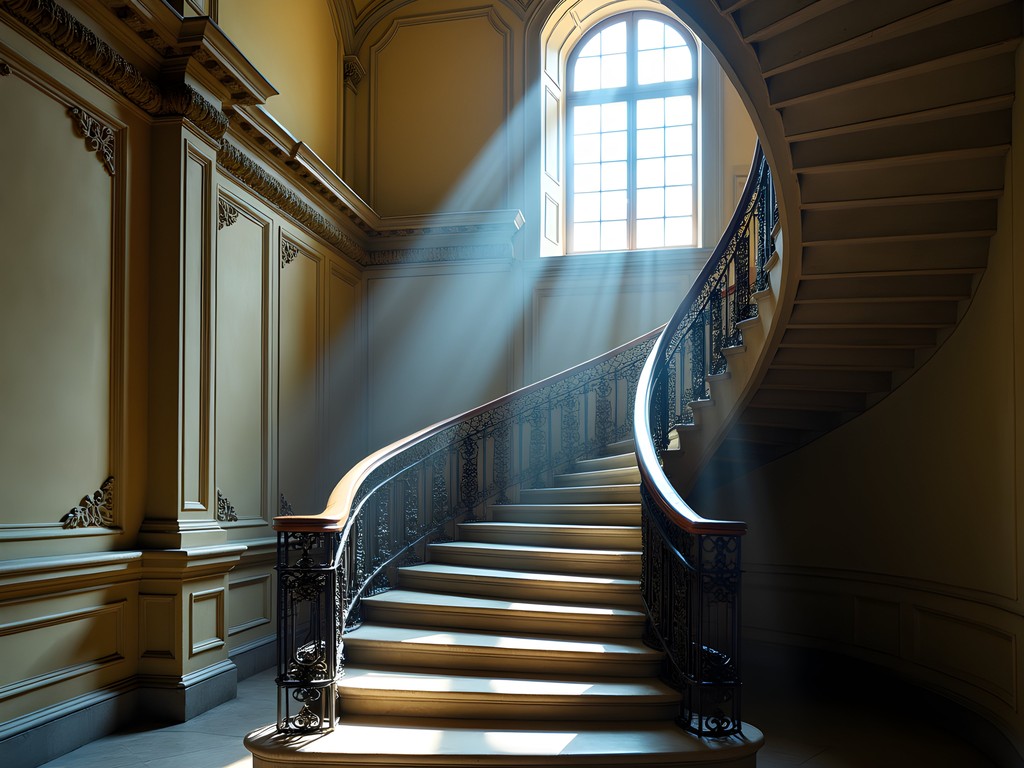
💡 Pro Tips
- Visit during weekday business hours when public buildings are accessible
- Learn the phrase 'Darf ich die Treppe ansehen?' (May I see the staircase?) for polite inquiries
- Look up immediately upon entering historic buildings—ceiling frescoes often indicate noteworthy staircases
The Forgotten Observatory: Stargazing from Graz's Highest Secret
My most treasured discovery in Graz came through a chance conversation with an astronomy professor at a local café. When I mentioned my interest in historical scientific instruments, his eyes lit up. "I could show you something special," he offered, "but we'll need to wait until evening."
That night, I found myself following him up a narrow staircase in an unmarked university building near Glockenspielplatz. Six flights up, we emerged onto a rooftop housing what he called the "forgotten observatory"—a small domed structure containing a 19th-century refracting telescope still in perfect working condition.
Built in 1886 for the university's physics department, this observatory was overshadowed by larger facilities constructed in the 20th century. Rather than being dismantled, it was simply abandoned and largely forgotten except by a small group of astronomy enthusiasts who maintain the instrument and occasionally open it for private viewings.
The telescope itself is a masterpiece of precision engineering—brass fittings and hand-ground lenses mounted on a clockwork tracking mechanism that still functions smoothly after more than a century. As someone who has spent a lifetime appreciating mechanical craftsmanship, I was moved by the elegant simplicity of its design. The professor demonstrated how to operate the dome rotation and adjust the telescope's position using the original hand wheels and gears.
What makes this experience truly special is the perspective it offers—not just of the stars above but of Graz below. The observatory's location provides a 360-degree view of the illuminated city that few ever witness. Through gaps in the city's light pollution, we observed Jupiter's moons and star clusters that have remained unchanged since the telescope first pointed skyward.
Gaining access to this hidden gem requires either university connections or participation in the occasional public viewing nights organized by the Astronomy Club of Graz. These events are advertised only on bulletin boards in the university's physics building, making them essentially invisible to conventional tourists.
For couples with an interest in science history or simply seeking a unique romantic experience, I recommend inquiring at the university's visitor center about upcoming observation nights. While not guaranteed, your interest might connect you with the passionate volunteers who keep this hidden observatory alive.
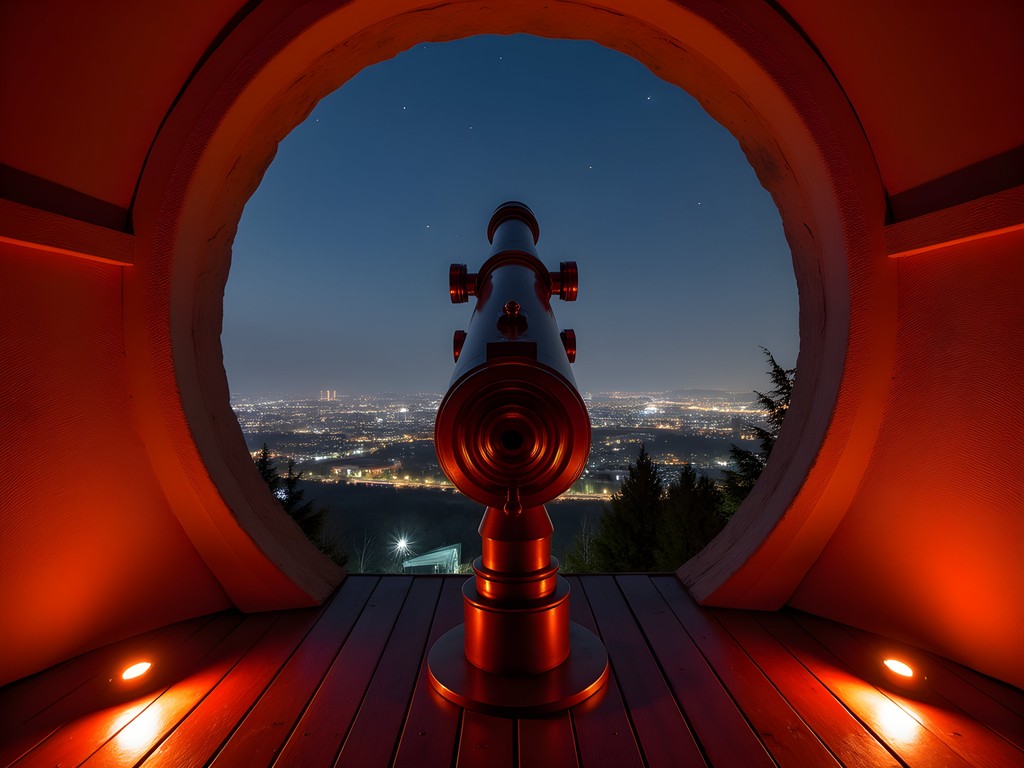
💡 Pro Tips
- Check university bulletin boards near the physics department for announcements of public viewing nights
- Bring a light jacket even in spring—the dome isn't heated and can get chilly after sunset
- Photography is permitted but tripods aren't allowed due to space constraints
Final Thoughts
As my train pulled away from Graz on my last visit, I found myself already planning a return. This city reveals itself in layers to those willing to look beyond the obvious attractions. What makes these hidden spots special isn't just their obscurity but how they showcase Graz's unique character—a place where design innovation and historical preservation have found perfect balance. For couples seeking connection through shared discovery, these secret locations offer moments that tourist crowds can never provide. Whether you're admiring centuries-old craftsmanship in a spiral staircase or watching light dance across water at midnight, Graz rewards curiosity with experiences that remain long after photographs fade. C'est dans les détails qu'on trouve l'âme d'une ville—a city's soul is found in its details. And Graz has details worth discovering, one hidden gem at a time.
✨ Key Takeaways
- The most rewarding discoveries in Graz come from venturing beyond the UNESCO-listed old town and famous Kunsthaus
- Spring offers the perfect balance of comfortable temperatures and fewer tourists for exploring hidden spots
- Connecting with locals—from market vendors to university professors—opens doors to experiences no guidebook can provide
- Graz's design heritage extends beyond famous buildings to include industrial spaces, scientific instruments, and everyday craftsmanship
📋 Practical Information
Best Time to Visit
April to early June, when spring blooms enhance the city and before summer tourists arrive
Budget Estimate
€100-150 per day per couple for accommodations, meals, and activities
Recommended Duration
3-4 days to properly explore both main attractions and hidden gems
Difficulty Level
Easy - Most Hidden Spots Require Only Moderate Walking, Though Comfortable Shoes Are Essential


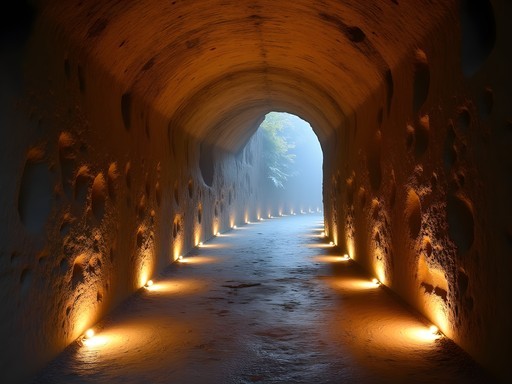

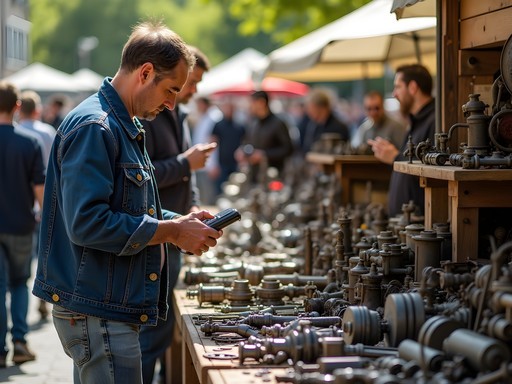
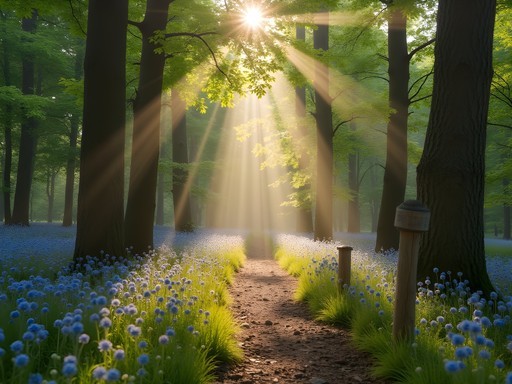




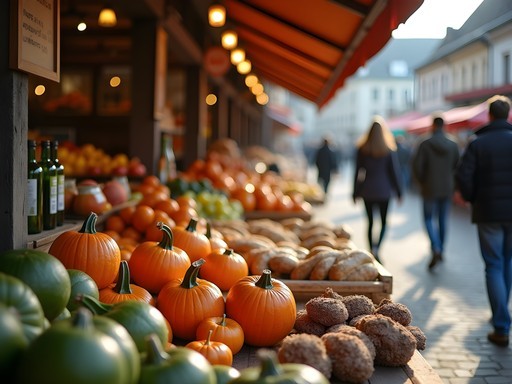

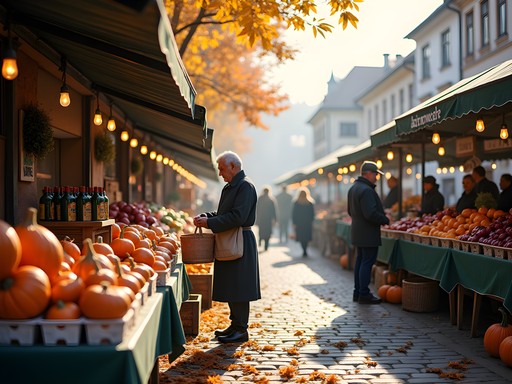




Comments
mountainmaster
Those forgotten courtyards look amazing! Adding Graz to my list for next summer.
sunsetchamp
Do it! And make sure to visit in early evening - the lighting in those courtyards is magical around 7pm.
Frank Garcia
Brilliant write-up on Graz, Nathan! I've been to Austria 6 times and somehow always skipped Graz until last year. The Atelier Jungwirth was an absolute revelation - seeing contemporary photography in that medieval vault creates such a fascinating contrast. I'd add another hidden gem: the botanical garden at the university. It's slightly outside the center but has this incredible tropical greenhouse and a medicinal plant section that dates back to the 1500s. The student café there serves the best Topfenstrudel I've had in Austria, and that's saying something!
globeway
Heading to Graz next month! How much time would you recommend for the Puchstraße Flea Market? Is it worth bringing my compact camera or is smartphone photography enough there?
Frank Garcia
Not Nathan, but I was there in September. The lighting can be tricky inside the covered sections of the market, so a decent camera helps. Plan at least 2-3 hours if you're into vintage mechanics or old Austrian collectibles. The food stalls at the back are worth checking out too!
globeway
Thanks Frank! Will definitely budget more time then. Any specific food stalls you'd recommend?
sunsetchamp
Those Schlossbergstollen tunnels were such a highlight when I visited last summer! Most tourists just take the funicular up to the clock tower, but exploring those WWII tunnels gave me a completely different perspective on Graz's history. The temperature drop inside was so refreshing in August too. Nathan, did you check out that tiny bar halfway through the mountain? They had this local schnapps that nearly knocked me sideways!
Nathan Mitchell
Yes! That's Schlossberg Bierkeller - what a find! That schnapps is called Zirbenschnaps, made from pine cones. Definitely has a kick!
sunsetchamp
Pine cones?! No wonder it tasted so... unique. Makes sense now why the bartender kept laughing when I asked for a second one.
summeradventurer
Love the photos of those hidden courtyards! Adding Graz to my bucket list right now.
roamhero
Great post! Which of these spots would you recommend for someone with only one day in Graz?
Nathan Mitchell
With just one day, I'd do the Schlossberg tunnels in the morning, then explore the Herrengasse courtyards, and finish at Atelier Jungwirth if they have an exhibition. All are within walking distance of each other!
summerguy
Just got back from Graz last week and used this post as my guide! That photography exhibition at Atelier Jungwirth was mind-blowing - they had a new installation about Alpine climate change that wasn't mentioned here. The contrast of modern photography in that medieval vault creates such an atmosphere. We also found this tiny wine bar two doors down that serves local Styrian wines. Perfect combination after viewing the exhibition. The staff at Jungwirth were super friendly too, gave us recommendations for other galleries when they heard we were art enthusiasts.
summeradventurer
Was the exhibition crowded? Planning to visit in October.
summerguy
Not at all! We had the place almost to ourselves on a Thursday afternoon. Apparently weekends get busier though.
Amit Sullivan
The Puchstraße Flea Market was such a delightful surprise when I visited Graz last autumn. As someone who loves mechanical oddities and vintage items, I was in absolute heaven! Found a beautiful 1950s Voigtländer camera that still works perfectly. I'd recommend going early (around 7am) as the best items get snapped up quickly. Also worth mentioning is the small food section at the back where you can try regional specialties - the käsekrainer (cheese-filled sausage) from the elderly couple's stall is outstanding. I always use my travel journal to note down these market finds and food discoveries. Nathan, did you try the local pumpkin seed oil while you were there? It's a Styrian specialty!
roamhero
Is the flea market open year-round? Planning a January visit and would love to check it out!
Amit Sullivan
It's open every Saturday year-round, but January can be hit or miss depending on weather. Fewer vendors in winter, but still worth a visit!
springguide
Just got back from Graz last week and can confirm these recommendations are spot on! I'd add one more hidden gem - the botanical garden at the university. It's slightly outside the center but has this amazing tropical greenhouse and peaceful Japanese garden section. Almost no tourists when I visited. Also, for anyone heading to those Herrengasse courtyards, there's a tiny coffee shop in the third one with the best Einspänner coffee I've ever had. The locals call it 'Kaffeeecke' but I don't think it even has an official name.
oceanmate
Oooh thanks for the coffee tip! I'm heading there next month and I'm a total coffee addict.
springguide
You're welcome! If you're into coffee, also check out Tribeka near Hauptplatz. More well-known but still excellent quality.
Sage Dixon
Nathan, your piece on the Forgotten Courtyards of Herrengasse took me right back! I spent three days last autumn exploring those hidden passages, each one like stepping through a portal to another era. The third courtyard with that tiny café - I sat there for hours during a rainstorm, watching locals dash through with their umbrellas while I sipped the most perfect Melange coffee. I'd recommend bringing a good pocket map since GPS gets wonky in those narrow passages. The courtyards are like a secret society - once you discover one, locals seem to share others with you like you've passed some invisible test.
Venture X
Premium card with 2X miles, $300 travel credit, Priority Pass